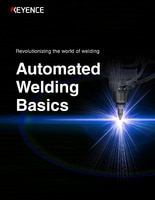Pressure welding types and principles
This page introduces the principles and types of pressure welding, as well as why this method is suitable for use in factory automation.
Pressure welding uses friction or explosion to heat the joining section of metal workpieces and join them under pressure. The process is also called solid-state welding. Pressure welding is a generic term for welding methods that weld workpieces by applying mechanical pressure on the joining section (weld joint).
The use of mechanical pressure allows numerical control of the process. Pressure welding has been used widely in FA (factory automation).
Major methods include gas pressure welding, friction welding, resistance welding, diffusion welding, ultrasonic welding, and explosion welding. Friction stir welding (FSW), a variant of friction welding, has become increasingly popular. This process can improve joint efficiency by using a rotating tool to stir the base materials with rotational friction while applying strong pressure on the joining section.
| Pressure welding type | Welding method | |
|---|---|---|
| Gas pressure welding | - | - |
| Friction welding | Friction stir welding (FSW) | - |
| Resistance welding | Lap resistance welding | Resistance spot welding |
| Projection welding | ||
| Seam welding | ||
| Butt resistance welding | Upset welding | |
| High-frequency induction welding | ||
| Butt projection welding | ||
| Flash welding | ||
| Butt seam welding | ||
| Diffusion welding | - | - |
| Ultrasonic welding | - | - |
| Explosion welding | - | - |




